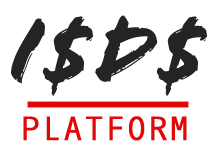Contours of trade pact with US in 2 weeks
Financial Express | 17 February 2025
Contours of trade pact with US in 2 weeks
by Mukesh Jagota
The trade agreement that India and the US have agreed to negotiate during prime minister Narendra Modi’s recent visit to Washington will not be akin to a free trade agreement (FTA), but explore ways to boost trade on a bilateral give-and-take basis.
According to official sources, the contours of the agreement will be clear in the next two weeks, with both sides agreeing to follow a tough time-line for official-level talks.
“It is not akin to FTA. What contours it will take we are working out. It (the pact) will be on a bilateral, rather than on Most Favoured Nation (MFN) basis. It is a much fairer kind of negotiations (that is going to be held), and a fair agreement that India is trying to take forward,” an official, who did not wish to be identified, said. “In a couple weeks the level of ambition of the agreement will be clear as well as the nature of the agreement,” he said.
While both sides move on the bilateral pact, India will prefer to wait for the outcome of the announcement by the US on adjusting import duties and applying them on reciprocal basis before making any firm commitments. “The bilateral trade agreement and reciprocal tariffs should not be mixed up. The reciprocal tariffs the US will impose under a law which they have introduced in the congress. We will (examine) it when it comes,” the official added. Officials said there is also a possibility that the levelling of tariffs by the US for a large number of countries would aid competitiveness of Indian exports.
“The government is planning to hold stakeholder consultations with the industry. Once tariffs are imposed we will be doing the cost benefit analysis. We feel that given the fact that we are moving forward in terms of overall relationship with the US, our exporters will gain,” the official said.
Both sides had agreed during Modi’s visit to Washington that the first tranche of the multi-sector pact will be finalised in next eight to nine months. The pact aims to enhance the overall trade between the two sides to $ 500 billion in 2030 from $ 200 billion at present.
“Agreement that we will negotiate will lead to export opportunities for our labour-intensive manufacturing sector and US exports of industrial goods to India. Both sides are also working to increase trade in agriculture products,” additional secretary in the department of commerce Rajesh Agarwal said. India exports agriculture products worth $ 4 billion to the US.
Experts are also of the view that if reciprocal tariffs are decided at the product to product level then India is well covered. The average tariff on 75% of US exports to India is less than 5% while India faces high U.S. tariffs on many labor-intensive goods like textiles, garments, and footwear, ranging between 15-35% on several products. There is enough room in these products for adjustment from the US side.
A very low share of India’s imports (by value) from the US have ‘high’ tariffs – 82% of India’s FY24 imports from the US had tariffs of 0-10%, while 15% of imports had tariffs of 10-20%. Just 3% of imports had tariffs higher than 20%.
In recent weeks India has lowered duties on high capacity motorcycles and whiskey to bring down the level of tariffs on products that are of export interest to US.





